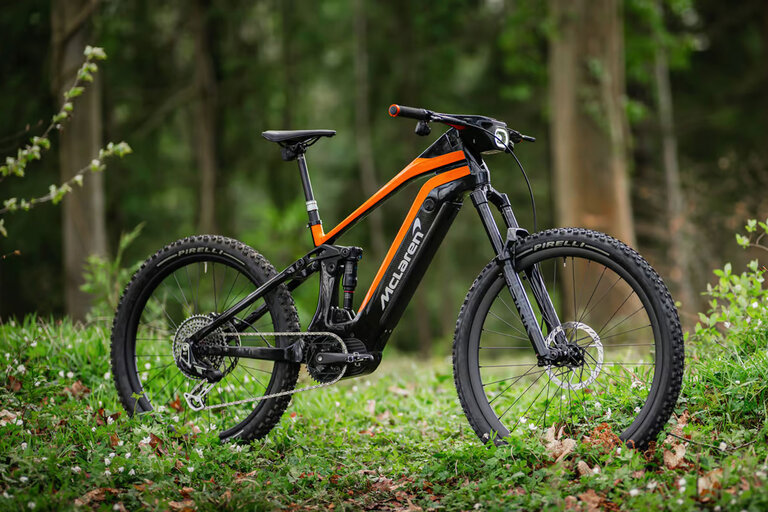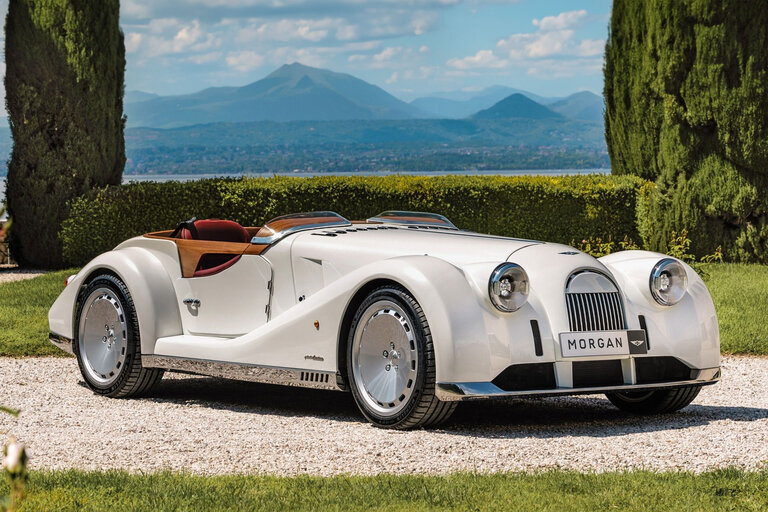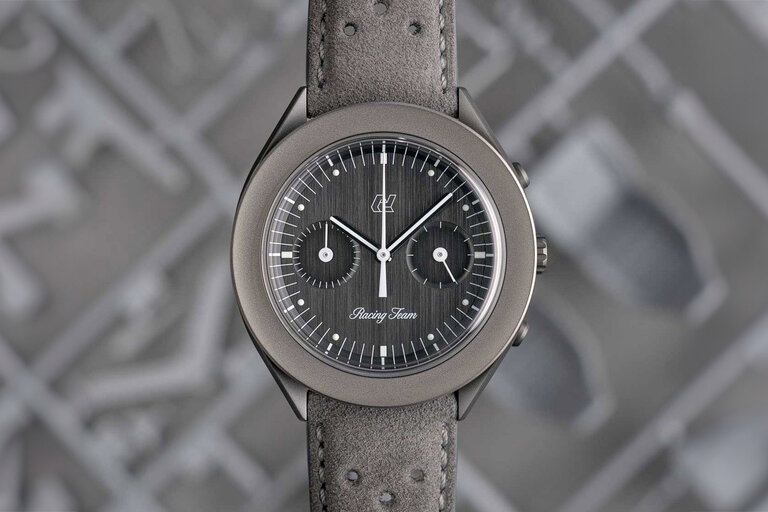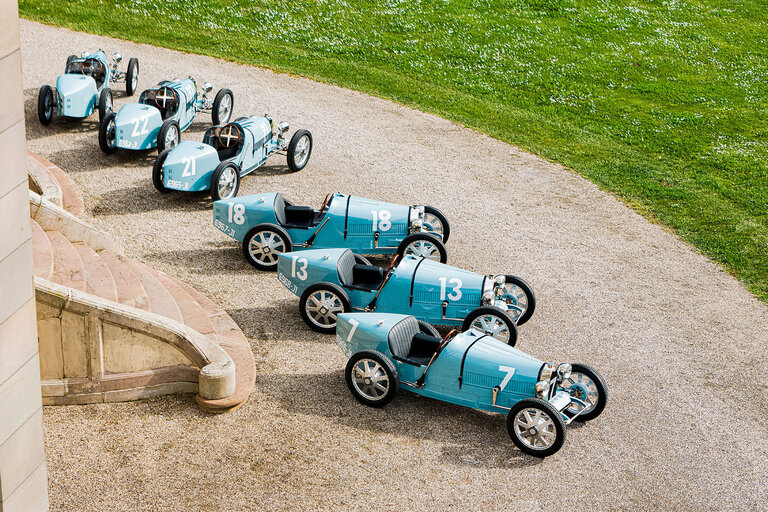
It might seem odd to fawn over an economy car, but where the Honda Civic is concerned, it has earned our respect. When it debuted in 1972, Americans were listening to Carole King records the size of the Civic’s first wheels. It was a weird decade, but in a country of bell-bottoms and roller skates along came a Japanese hatchback with a transversely mounted 1.2-liter engine. The first Civic was everything other small cars weren’t. The Chevrolet Vega and Ford Pinto were rolling sacrifices amid an international fuel crisis, but the small and efficient Civic felt like perfect timing. It was also fun to drive, something that’s still true today. Enjoy this brief history of the legendary H-badge lineage, from its humble beginnings to its high-performance adolescence.
First Generation: Coming to America
Although the exteriors were virtually indistinguishable, Honda offered the first-gen Civic as both a three-door hatchback and a sedan. The sedan version essentially was exactly like the hatchback, except that the conventional trunklid and fixed rear seat of the sedan were replaced by an upward-hinged rear window and fold-down seat in the hatchback. Wheels were 12 inches in diameter, and radial tires, A/C, a two-speed automatic transmission, and a rear hatch wiper were the only options. In C/D’s review of the 1973 Civic, we said, “For convenience on congested inner-city streets it is without peer.” Quality and optimism were in short supply in the early 1970s, and the Civic had both in spades.
First Generation: Small Package, Big Power
In 1974, Honda added a larger engine to the Civic measuring 1237 cubic centimeters. Horsepower was up by two for a total of 52 hp, which is pretty impressive given the minuscule increase in displacement. The feds got their licks in, too, with the new 5-mph bumper mandate requiring Honda to fit beefier units to the Civic. (1975 model pictured)
First Generation: Compound Vortex Controlled Combustion
Although Honda managed to sell a respectable 43,119 Civics in 1974, it was the arrival of the CVCC engine in 1975 that established the Japanese maker as a credible threat to the old guard. While the majority of automakers where begrudgingly fitting exhaust catalysts to their vehicles in order to meet the nation’s tightening emissions standards, Honda quietly went to work and found a better way. Displacing 1488 cc and producing 53 horsepower, the CVCC (Compound Vortex Controlled Combustion) engine featured a head and fuel-delivery design for cleaner and more complete combustion that met the new standards without the need for a catalytic converter and while still running on leaded gasoline. A new five-speed manual transmission and wagon body style came onboard as well, and the Civic was ranked number one on the U.S. Environmental Protection Agency’s first list of America’s most fuel-efficient cars in 1977. It was worth the effort, as sales of the Civic topped 100,000 units.
First Generation: Refreshed with More Power
To finish out the decade, Honda bestowed upon the Civic some subtle exterior styling tweaks including a blacked-out grille and new hood vents for 1978. The add-on turn signals remained, but their PepBoys look was toned-down dramatically by moving them to under the bumper. 1979 brought power increases for both engines, the base unit now producing 55 horsepower and the CVCC unit now making a neck-breaking 63. (1978 Honda Civic GL pictured)
Second Generation: Growing Up
By the time the second-generation Civic debuted in 1980, Honda had surpassed its status as a niche automaker. With a wheelbase of 88.6 inches for the hatchback (a two-inch increase over the original Civic’s Lilliputian 86.6-inch span), the Civic had grown slightly but was still dwarfed by the domestic competition. Both available engines, a 55-hp 1.3-liter and a 67-hp 1.5-liter, now employed the CVCC design. Base models got a four-speed manual transmission, while DX trims got the five-cog unit; the two-speed automatic returned as an option. In 1981, a Civic Wagon was also added. (1981 Honda Civic GL pictured)
Second Generation: Civic GL
Stepping up to the GL trim brought a tach and clock on the inside and enhanced trim, radial tires, and a rear window wiper/washer on the outside. To celebrate the final year of second-gen Civic production in 1983, Honda dumped the 1500 GL trim and replaced it with the Civic S model. It featured a firmer suspension, a rear stabilizer bar, and 13-inch 165/70 Michelin tires. (1981 Honda Civic GL pictured)
Third Generation: Cruising the 1980s
In 1984, Arnold was still the Terminator, mullets and neon hues were considered cutting-edge fashion, and MTV continued its quest to make radio irrelevant. To celebrate, Honda released an all-new Civic. Available in hatch, sedan, and wagon body styles, the wheelbase grew by five inches, with the sedan and wagon now sharing a wheelbase with the Accord and Prelude. The 1.5-liter four-cylinder with a three-valve head became standard across the lineup, except in the base three-door hatch, which carried on with the old 1.3-liter unit, and the FE model was scuttled. This is the era the popular D-series engine was introduced. Sadly, the independent rear suspension was ditched during the makeover for one with a more compact design. (1984 Honda Civic S pictured)
Third Generation: Tall Boy
The third-generation Civic wagon became known as the “Tall Boy” due to its extra height and larger rear-window area. In 1987, the wagon would be offered with four-wheel drive. (1985 Honda Civic wagon pictured)
Third Generation: Welcome to Ohio
In 1986, Honda began building Civics Stateside at its facility in central Ohio. An Si hatchback was also offered; we’ve covered the history of the Civic Si model elsewhere on the site. (1986 Honda Civic sedan pictured)
Fourth-Generation: Sharp New Looks
The fourth-generation Civic debuted in 1988 sporting a new engine family, airier greenhouses, and a softer shape almost completely devoid of the creases that defined the previous two generations. The DX hatchback and sedan as well as the new LX sedan and wagon received the new fuel-injected, 92-horsepower, 1.5-liter 16-valve engine, while the base hatch made do with a fuel-injected 70-hp four. Those looking for a little Si action could order the four-wheel-drive Civic wagon, which came equipped with the same 105-hp 16-valve four-holer that motivated the CRX Si. Sitting high atop the Civic lineup, the new-for-’88 LX sedan offered buyers decadent comforts such as power windows, locks, mirrors, and intermittent wipers. (1988 Honda Civic DX hatchback pictured)
Fourth Generation: 10Best Winner
In addition to a slight increase in wheelbase (the hatch now measuring 98.4 inches compared with the previous gen’s 96.5), a control-arm suspension setup, reportedly inspired by Honda’s Formula 1 cars, was employed front and rear. Despite the model being named to our 1988 10Best list, a Civic DX hatch finished second-to-last in our “Eight for Ten” sub-$10K small-car comparo that same year. The Civic was beat by, among others, the Volkswagen Fox, Subaru Justy, and Mercury Tracer. Okay then. For the record, the Civic made it back to the 10Best list for 1989. (1988 Honda Civic DX pictured)
Fourth Generation: Civic EX Sedan
1990 brought revised bumpers and taillights, and the EX sedan arrived to knock the LX sedan off the top of Civic mountain. Equipped with the 14-inch wheels, the EX offered all of the LX’s accoutrements, plus the 105-hp engine from the freshly reintroduced Civic Si. In 1991, the fourth-gen Civic finished its run virtually unchanged. (1991 Honda Civic EX sedan pictured)
Fifth Generation: VTEC Kicked in Yo
Packing more trim and engine options than ever, the fifth-generation Civic approached the model’s 20th anniversary with a hint of order-sheet price creep that its earlier offerings so efficiently avoided. Among the trim levels for the hatchback: CX, DX, VX, and Si. The CX got a 70-hp 1.5-liter four; the VX a 92-hp 1.5-liter with variable valve timing (VTEC-E) optimized for fuel savings; the DX a 102-hp 1.5-liter; and the Si a 125-hp VTEC engine. A driver’s-side front airbag became standard, the wagon was dropped, and sedans came in the familiar DX, LX, and EX trim levels, the latter adding the Si’s 125-hp engine and a standard sunroof to its list of niceties. (1992 Honda Civic VX hatchback pictured)
Fifth Generation: Coupe de Compact
The Civic coupe debuted in 1993 (as did the Civic-badged Del Sol). Sharing its 103.2-inch wheelbase with the sedan, the coupe came in DX and EX trim levels that mirrored those of the hatchback. The EX coupe, however, upped the ante in terms of optional amenities, adding a one-check package that included a passenger airbag and a higher-output stereo. (1993 Honda Civic DX coupe pictured)
Fifth Generation: Safety First
Safety features led the way for 1994 model year, with the Civic receiving a passenger-side front airbag across the lineup. Anti-lock brakes became optional on the top-drawer EX coupe, Si hatchback, and the new-for-’94 LX sedan, which slotted into the lineup between the DX and the top-dog EX. LX buyers received cruise control, 14-inch wheels—even in 1993, the DX was still rolling on 13-inchers—and power windows, locks, and mirrors. 1995 marked the end of the line for the fifth-gen Civic, and it finished out its cycle with minor changes.
Fifth Generation: Fast and Furious
Although Paul Walker drove a Mitsubishi Eclipse in the 2001 film, The Fast and the Furious, the Honda Civic is really responsible for it all. The movie featured a scene where a group of fifth-generation Civics attempt a heist on a semi truck. Like the rest of the film, this scene is totally over the top, as the black Civics had giant fiberglass bodykits, green aftermarket underbody lighting, and exhaust sound dubbed over the actual filming to heighten the action.
Sixth Generation: Bigger and Better
Redesigned for the 1996 model year, the Civic continued its growth pattern, as overall length increased from two to four inches depending on the model. Hatchbacks now had the 103.2-inch wheelbase of the coupes and sedans, but the number of hatch trims was pared down to two—only the CX and DX made the cut. A fully revised 1.6-liter engine that produced 106 horsepower and earned low-emission-vehicle status motivated the CX, DX, and sedan-only LX models. To help fill the hole left by the departure of efficiency-focused VX hatch, Honda added an HX trim to the coupe lineup. Powered by a revised 1.6-liter VTEC-E engine, the HX coupe posted EPA figures of 39 mpg city and 45 mpg highway. Later, Honda would make a continuously variable automatic transmission available as an option on the HX. (1996 Honda Civic DX hatchback pictured)
Sixth Generation: Natural Gas
The entire Civic lineup got 14-inch wheels for 1997; curiously, anti-lock brakes disappeared from the Civic coupe EX’s order sheet. 1998 brought the addition of the natural-gas-powered GX, which was sold exclusively to fleet customers. Interior map lights and an exterior handle were the main updates for the hatchback. 1999 saw the arrival of Honda’s “value package” that bundled A/C, a CD player, an automatic transmission, and other high take-rate options into one value-priced pack. The Civic Si also reappeared at this time but only as a coupe. (1996 Honda Civic sedan interior pictured)
Sixth Generation: Red-Lettered Coupe
Although it debuted three years earlier in Japan, the U.S. finally got the Honda Civic Si as a 1999 model, this time in coupe form. A high-revving VTEC dual-overhead-cam 1.6-liter, better known as the popular B16 engine, made 160-hp. That’s a lot for its size, but more impressively it could rev as high as 8500 rpm. It was a raw performer, one that’s still a blast to drive today, even against its modern counterpart. It could scream to 60 mph in just 7.1 seconds, and was surprisingly quick in the quarter-mile, at under 16 seconds. For reference, the 1994 Acura NSX achieved a blistering 13.6-second time. The sixth-generation Civic Si coupe would only last two model years, making it a growingly valuable Honda to still own today. To answer your question, yes, you should’ve kept yours.
Seventh Generation: New Civic, New Struts
By the time the redesigned seventh-generation Civic debuted for the 2001 model year, the world had changed dramatically. The internet had taken root, MP3 music files were in steady circulation, and fuel prices, after nearly a decade of uncharacteristic stability, would begin to climb in the wake of the events of 9/11. The Civic rode into the new millennium with fresh styling and a new suspension on a 103.1-inch wheelbase. Out went the Civic’s control-arm front suspension, replaced by a strut setup, and the 1.6-liter four got another bump in displacement, now measuring in at 1.7 liters. Producing 117 horsepower in DX and LX trims, the Civic got an extra 10 from the engine for duty in the EX. (2001 Honda Civic HX pictured)
Seventh Generation: Return of the CVT
Shifting was handled via a five-speed manual or four-speed automatic; the CVT returned for the natural-gas GX and as an option on the efficiency-focused HX. 2002 brought a revised steering box and slightly modified suspension to address the ride and handling, and the use of sound insulation materials were increased to quiet the cabin noise levels. (2001 Honda Civic EX Interior pictured)
Seventh Generation: Definitely Not A Van
In 2002, Honda only offered its Si model as a hatchback. Assembled in Swindon, England, the 160-hp 2.0-liter engine wasn’t the most exciting piece of equipment. Although it had more torque before, the new 2.0-liter, dubbed the K20, offered the same horsepower, but with a redline of just 6800 rpm. The Civic Si also moved to a MacPherson-style strut assembly for the front suspension, instead of a double wishbone setup. Honda also put the shifter on the dash, instead of the floor. Despite its obvious lack of thrill, it still placed second in a three-car hot-hatchback showdown behind the Ford Focus SVT. The chassis was revised in 2004 with five-lug wheels, brighter projector headlights, and an available Honda Factory Performance package added a special suspension, body parts, and wheels.
Seventh Generation: Civic Hybrid
In 2003, Honda released the Civic hybrid to the U.S. market powered by an 85-hp 1.3-liter four mated to a 13-hp electric motor sandwiched between the gas engine and the transmission. The combo employed a number of efficiency tricks including engine stop-start, cylinder deactivation, and low-rolling-resistance tires, among others, to earn a rating of 46 mpg in the city and 51 mpg on the highway. It was the first vehicle sold here to be certified as an Advanced Technology Partial Zero-Emissions Vehicle (AT-PZEV) from the California Air Resources Board. Honda loyalists gleefully pointed out that the 1995 Civic VX returned 48/55 mpg in the same tests. (2003 Honda Civic hybrid pictured)
Seventh Generation: Quiet Riot
Even more sound-deadening materials arrived for 2004, as did new stereo speakers to take advantage of the ostensibly quieter cabin. Hybrid drivers got more comfortable thanks to a height-adjustable seat. To finish out the run, in 2005 Honda created an SE model featuring aluminum wheels, a spoiler, and a leather-wrapped steering wheel; the Special Edition package was revamped for both the sedan and coupe, offering an upgraded stereo with MP3 capability and a six-disc CD changer. (2004 Honda Civic sedan pictured)
Eighth Generation: Funky New Looks
After years of unadventurous and logical updates, Honda veered off the beaten path with the introduction of the eighth-generation Civic. Fresh and funky—for a Civic, anyway—the short hood and steeply raked and expansive windshield yielded to a more traditional profile and rear flanks. The Civic became heavier, likely in part due to the additional airbags required to improve safety ratings over its predecessor. A new Civic Si also debuted as a 197-hp coupe with a six-speed manual. A Civic Si sedan would be introduced later, but both cars came standard with a limited-slip-differential and an impressive 8300 rpm redline.
Eighth Generation: Without Limits
The first-ever Civic Si sedan arrived for 2007, while in 2008 leather upholstery appeared on the order sheet for the first time in the model’s history. To commemorate the inclusion of animal hides, Honda introduced the EX-L trim level to the Civic. 2008 also saw the release of the limited-production Mugen Si sedan (pictured).
Eighth Generation: Civic GX CNG
The natural-gas GX also returned for 2006 (it first appeared in 1998 as a fleet vehicle), this time packing a 1.8-liter engine mated to a five-speed automatic transmission. We had trouble wrapping our heads around the logic of paying $25,185 for the Civic GX sedan—the only CNG-powered vehicle available to new-car buyers at the time—when a base Civic DX could be had for $16,405. Heavier, slower, and featuring less usable trunk space, the GX burned clean but at a hefty price. The Civic hybrid returned too, this time earning city and highway EPA ratings that both stood at 50 mpg. After ratings were rejiggered for 2008, however, the hybrid’s rating dropped to 40/45 mpg.
Ninth Generation: Detroit Teaser
Appearing as a concept, the ninth-generation Civic made its public debut at the 2011 Detroit auto show. Although technically a prototype, Honda’s usual practice is to preview its latest models as near-production concepts to keep the car-buying public’s attention as long as possible. (Honda Civic concept pictured)
Ninth Generation: Do Better
When we got our hands on a pair of 2012 Civics (coupe and sedan) in April of 2011, we were a little underwhelmed. At the time, we noted how the styling updates—a longer hood, sculpted bumper, and larger taillamps—“made the Civic look more conventional than before.” Overall width, height, and length were unchanged, and despite the sedan’s 1.6-inch shorter wheelbase, rear legroom increased by 1.6 inches. Unfortunately, the sharp driving dynamics that helped to set the Civic apart from the rest of the economy-car pack were dulled in the redesign process, with a softer suspension and less controlled body motions. In addition, steering response was slowed in an effort to improve linearity, while road feel and feedback were reduced in the process. One of our reviewers referred to the car’s handling as “alarmingly Lincoln-like.” Adding insult to injury, the interior layout and quality of some of the materials, long a Civic high point, took a step backward, too. While competent, the 2012 Civic lost the plot.
Ninth Generation: Improvements Delivered
Aware of its transgressions and eager to restore the Civic to its place at the top of the compact-car heap, Honda made quick reparations for the 2013 model year. The suspension was massaged with thicker anti-roll bars (up 0.9 inch in front and 0.2 inch at the rear), stiffer springs (by 15 percent in the front and 18 percent in back), and retuned dampers. At the time, we called the effects, “almost transformative,” going on to say that, “the ride is now controlled without being harsh, imparting a distinctly less cheap feeling.” The steering was also addressed, Honda quickening the ratio by 8 percent (quantified as going from 16.1:1 to 14.9:1). Although it still lacked feel, the new steering ratio returned the quick and agile personality of previous models. Those tweaks, combined with a refreshed interior featuring a reworked center stack and upgraded plastics, made the Civic far less of a bummer.
Tenth Generation: X Marks the Spot
Atoning for sins committed in 2012 and not fully reversed with its 2013 Civic update, Honda rolled out an all-new Civic for 2016. The tenth-generation model launched as a four-door sedan but was quickly joined by a striking two-door coupe and, later, a four-door hatchback. A 158-hp 2.0-liter inline-four was standard—with a manual transmission!—and a 174-hp turbocharged 1.5-liter four was optional and also available with a stick shift. The sole automatic option was a continuously variable transmission, albeit one of the best of its type in the industry. Critically, every version of the new Civic drove with an enthusiasm and sharpness lacking from the previous model, and the turbocharged iterations were surprisingly quick, even when equipped with the CVT.
Tenth Generation: A Si of Relief
One year after the 10th-generation Civic gwent on sale, the lineup expanded to include a sporty Si variant. Available in both four-door-sedan and two-door-coupe forms, the Si featured a sport-tuned suspension with adaptive dampers, aggressive body addenda (including a center-exit exhaust), and a 205-hp version of the regular Civic’s turbocharged 1.5-liter four. Chassis poise and grip were superb, and the sole transmission choice—a six-speed manual was a joy to use.
Tenth Generation: Return of the Type R
The only car to wear a red Type R badge before it, was the Acura Integra Type R in 1997. We tested it, and it was an awesome car, but the 306-hp turbocharged hatchback-only Civic that Honda now sells in the U.S. was worth the wait. Unlike the normal Civic hatchback, this model is wider, with a a crazy wing bolted to the rear hatch and 20-inch wheels so big it’s almost embarrassing. Its body has anime proportions, but on the inside is a surprisingly pleasant ride thanks mostly to its comfortable cloth bucket seats. The Type R is offered with a manual six-speed transmission, just like the Si. During our testing, it achieved 0.99 g on the skidpad and stunning grip is another big part of what makes the car so much fun.
Tenth Generation: Quickest Front-Wheel Driver Ever
Eleventh Generation: New Civic Prototype
The 2022 Honda Civic prototype is a glimpse at the 11th-generation Civic, expected to arrive in spring 2021. Details are pretty scarce, but we expect to to see hatchback, Si, and Type R versions. The coupe that died at the end of the 2020 model year won’t make a return. The windows are tinted dark on purpose, as not to reveal the interior. The real 11th-generation Civic should debut closer to its on-sale date next spring.
Eleventh Generation: The Real Deal
The 11th-generation Honda Civic has been revealed in full and will use the same 158-hp four-cylinder and 180-hp turbocharged four-cylinder as before. The Civic’s new subdued appearance is more serious and similar to the Accord. It’s all grown up now. The wheelbase is longer by 1.4 inches and the rear track is 0.5-inch wider. The Civic sedan arrives first, but a hatchback model and Si and Type R performance versions are on the way. The civilized Civic will be sold with a continuously variable automatic transmission only—adding to everyone’s anticipation for for the manual-transmission Civic Si and Type R models. The interior is refined as well. A 7.0-inch touchscreen was once the biggest screen you could get in a Civic, now it’s standard equipment. A 9.0-inch touchscreen is now offered on Touring models. And if you didn’t like the plastic buttons on the previous Civic’s steering wheel, well, try these new plastic buttons. The shifter has also been moved closer to the driver, rather than smack-dab in the middle of the center console. We’ll throw 2022 Civic test results in here when we get behind the wheel of the new compact car later this year.
Every New Compact Car Ranked from Worst to Best
This content is created and maintained by a third party, and imported onto this page to help users provide their email addresses. You may be able to find more information about this and similar content at piano.io
Source link





